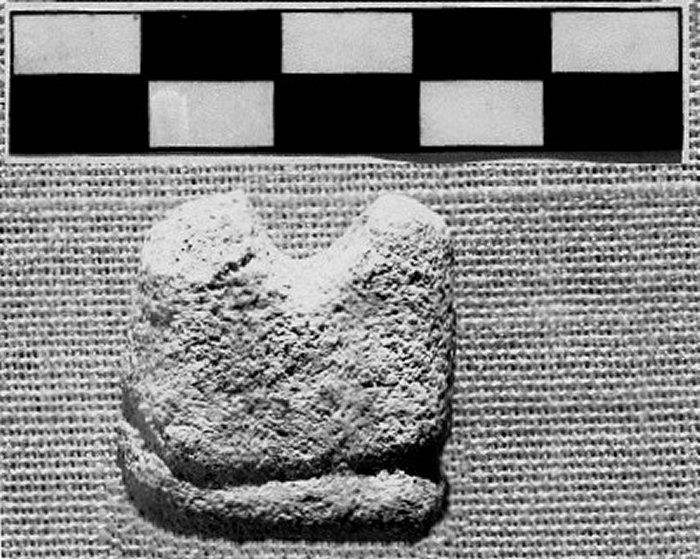Two-Horned 'Rook' Might Be the Oldest Chess Piece on Earth
By Brandon Specktor - Senior Writer a day ago

This horned "rook" may be the world's oldest-known chess piece.
(Image: © John Peter Oleson)
In the game of chess, a rook can move as many spaces as it can in one direction. Or, it can sit stone-still and guard the pieces around it, potentially holding its ground for an entire match — or thousands of years (whichever comes first).
John Oleson, an archaeologist at the University of Victoria in British Columbia, Canada, believes he and his colleagues may have found one such rook that has been lying in the sand below an ancient trading post in Jordan since the seventh century. The stout sandstone figure, excavated from the ruins of an early Islamic settlement in 1991, has a rectangular body with two horn-like protrusions on top. While this may look far from the crenellated castle towers we call rooks today, it's spot-on for rooks in the earliest known chess sets, where those swift-moving pieces were shaped to evoke horse-drawn chariots. (The word "rook" comes from "rukh," the Persian word for chariot.)
If the tiny sandstone figure Oleson excavated is indeed a rook, it may be the single oldest chess piece ever discovered, dating to roughly 1,300 years ago.
"There are references to chess-playing in Islamic texts as early as A.D. 643, and the game was popular throughout the Islamic world," Oleson wrote in an abstract for a presentation on the piece. "Since the game probably was carried westward from India by the movement of merchants and diplomats, it is no surprise that early evidence for it should be found at a site" on a busy trade route like this one, he added in the presentation, which he delivered at the American Schools of Oriental Research 2019 meeting in San Diego last week.
More:
https://www.livescience.com/oldest-chess-piece-humayma-jordan.html
